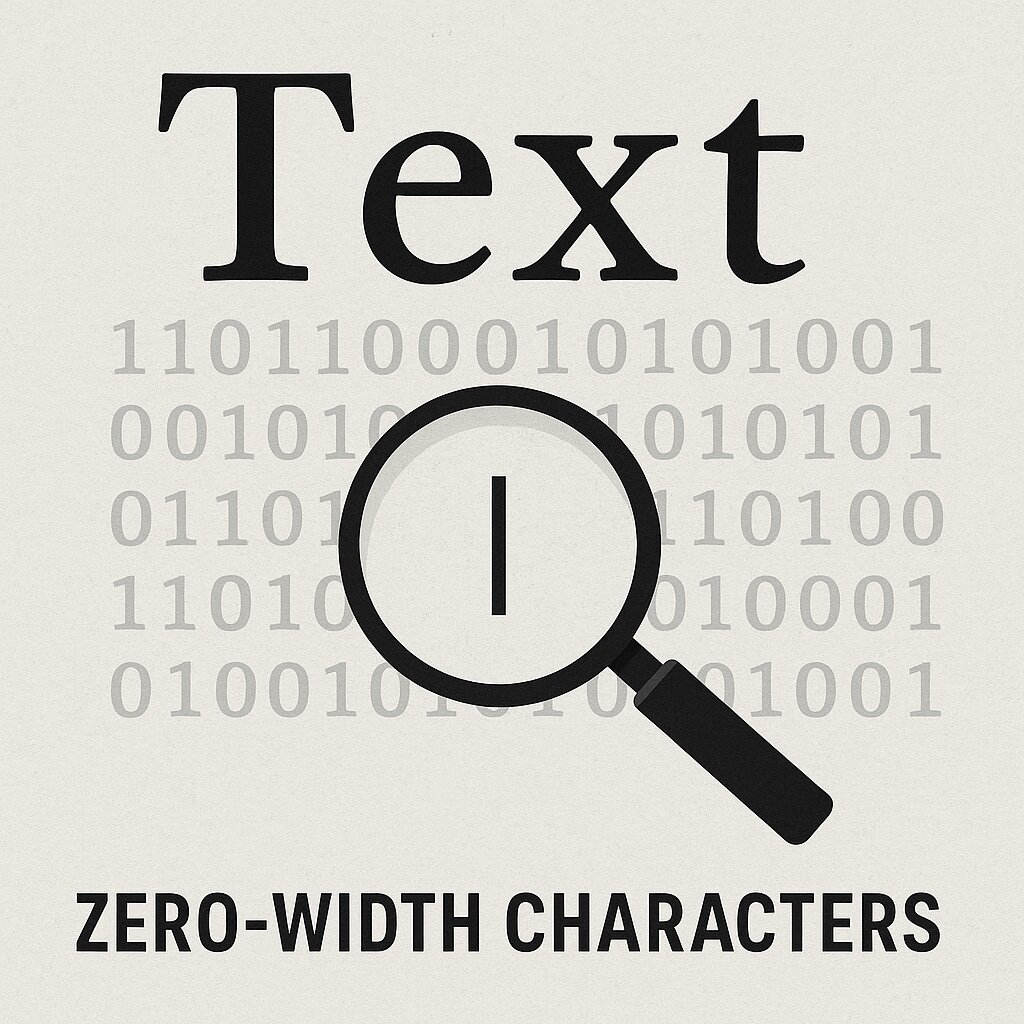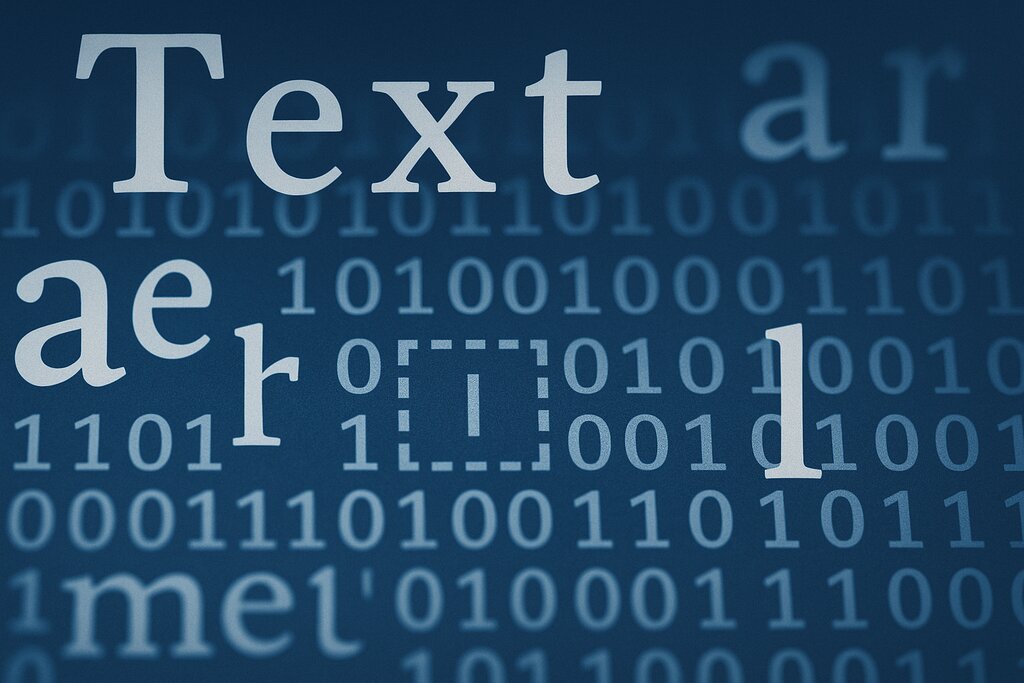In digital communication, text appears clear and transparent at first glance. But behind seemingly ordinary letters, invisible characters can lurk – so-called zero-width characters, invisible control characters, or homoglyphs. These tiny, invisible code points can have serious consequences: from technical errors and data loss to targeted manipulation.
What Are Invisible Characters?
The Unicode standard includes numerous characters that have no visible representation but are still present in text. Examples include:
- Zero Width Space (U+200B) – an invisible space with no width.
- Zero Width Non-Joiner (U+200C) and Joiner (U+200D) – characters intended for complex writing systems.
- Soft Hyphen (U+00AD) – a conditional hyphen that only becomes visible at line breaks.
- Byte Order Mark (U+FEFF) – originally a technical control character for text encoding.
In normal texts, these characters should rarely appear. In practice, however, they show up surprisingly often – mostly unnoticed.
Where Do These Characters Come From?
There are several typical causes:
- Copying from PDFs or websites:
Many text sources contain invisible control characters that are copied along during copy & paste. - Automatic text processing or AI systems:
Some AI models or scripts inadvertently insert zero-width characters – or use them intentionally as watermarks for source identification. - Disguise and manipulation:
Attackers can deliberately use invisible characters to conceal content, bypass spam filters, or hide malicious links. - Faulty encoding or export:
Different character sets and formatting lead to invisible code points being created during saving or transmission.
Why Are They Problematic?
Invisible characters can cause damage on multiple levels:
- Technical problems: Strings or passwords that look identical but contain different code points lead to malfunctions in software, databases, or APIs.
- Manipulation of text content: In HTML, email addresses, or links, zero-width characters can be used to disguise malicious content.
- Faulty data analysis: In text mining, SEO, or statistical evaluation, such characters distort the results.
- Loss of trust: When texts are no longer exactly reproducible, data integrity suffers.

CleanText: The Clean Solution
To avoid these problems, I developed CleanText – an online tool that cleans texts of invisible characters, HTML remnants, and special characters.
CleanText reliably detects and removes:
- Zero-width characters (U+200B, U+200C, U+200D, U+FEFF, …)
- Control characters and invisible formatting
- HTML tags and non-printable Unicode code points
- Superfluous spaces and line breaks
The result is clean, clearly structured text that can be safely processed further – whether for websites, documents, databases, or AI analyses.
Why This Topic Is Becoming Increasingly Important
With the increasing use of AI-generated content, the number of texts containing such invisible traces is also growing. Some systems even deliberately use zero-width characters to mark their content. This makes it all the more important to check text data for invisible artifacts before they are published or processed.
A tool like CleanText helps regain control – over the integrity, security, and readability of texts.
Conclusion
Invisible characters are more than just a technical curiosity – they can represent real risks and sources of error. Whether in automated workflows, data preparation, or editorial processes: only clean texts are reliable texts.
Key takeaways:
- Invisible characters like zero-width characters can lead to technical errors and manipulation
- They often originate from PDFs, websites, AI systems, or faulty exports
- CleanText reliably detects and removes invisible characters and control codes
- AI-generated content increasingly contains such hidden markers
- Text integrity is a security and quality feature
➡️ With CleanText, such characters can be quickly detected, analyzed, and removed – for clarity, security, and trust in digital content.
